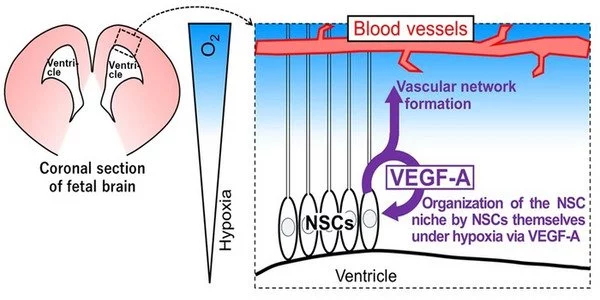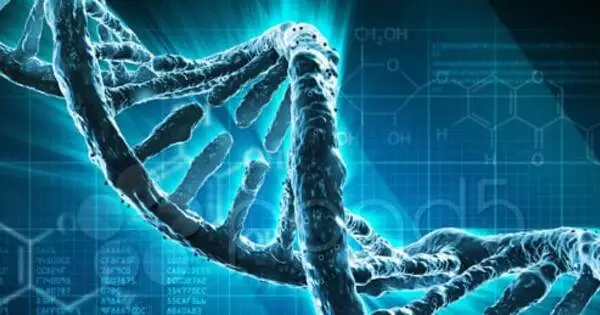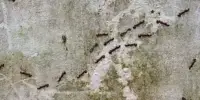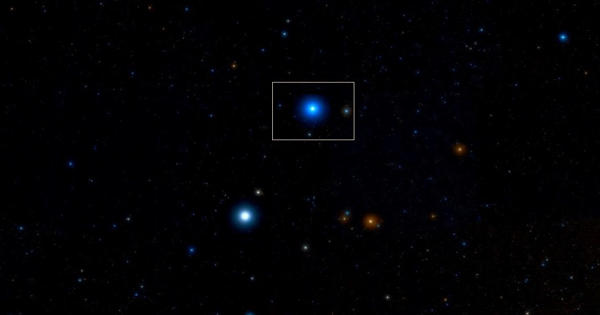Neural stem cells (NSCs) play an important role in maintaining their microenvironment in the central nervous system (CNS). NSCs are undifferentiated cells that have the ability to self-renew and differentiate into various types of neural cells. They are located in specific regions of the brain, such as the subventricular zone (SVZ) and the hippocampus, and are responsible for generating new neurons and glial cells throughout the lifespan.
Tokyo Medical and Dental University (TMDU) researchers shed new light on the characteristics of the niche in which neural stem cells reside in the developing brain.
Tokyo, Japan – When it comes to cell types, stem cells have literally limitless potential. These self-renewing cells, which can give rise to any cell type in the body, live in specialized microenvironments known as niches. Japanese researchers have now shed new light on the dynamics of the neural stem cell niche, the brain’s home for stem cells.
In a new study published in Inflammation and Regeneration, researchers from Tokyo Medical and Dental University (TMDU) investigated the effects of hypoxic (low oxygen) conditions on the neural stem cell niche during development.
The results were striking, with significantly increased neurosphere formation observed under hypoxic conditions compared with normoxic conditions. This led us to explore what factors play a role in the maintenance and proliferation of NSPCs under hypoxic conditions.
Taichi Kashiwagi
Neural stem and progenitor cells (NPSCs) give rise to brain and nervous system cells. NSPCs are known to live in a hypoxic niche, which means that their oxygen levels are lower than those of the surrounding tissues. However, the composition of this niche and how NSPCs stay within it are not entirely clear. The TMDU-led research team used a cell culture model of NSPCs isolated from embryonic mouse forebrains to investigate the effects of low oxygen conditions within the neural stem cell niche. They cultured these cells into neurospheres, or free-floating stem cell clusters, in both low and high-oxygen environments.
“The results were striking, with significantly increased neurosphere formation observed under hypoxic conditions compared with normoxic conditions,” says co-lead author of the study Taichi Kashiwagi. “This led us to explore what factors play a role in the maintenance and proliferation of NSPCs under hypoxic conditions.”

As a potential candidate, the researchers looked at a protein called vascular endothelial growth factor-A (VEGF-A). Neurosphere formation was significantly increased when the researchers added VEGF-A to the NSPC cultures. Under low oxygen conditions, however, blocking VEGF-A with a drug inhibitor reduced the increase in neurosphere formation. Furthermore, under low oxygen conditions, VEGF-A expression was found to be upregulated in NSPCs.
“We discovered that NSPCs treated with VEGF-A had lower rates of cell death and higher rates of cell proliferation,” says senior author Tetsuya Taga. “VEGF-A is a factor that appears to contribute to NSPC maintenance under low oxygen conditions.”
NSCs not only differentiate into neural cells but also secrete growth factors and cytokines that regulate the survival, proliferation, and differentiation of other cells in their microenvironment. For example, NSCs in the SVZ secrete factors that regulate the migration of new neurons from the SVZ to the olfactory bulb, where they differentiate into interneurons. NSCs in the hippocampus secrete factors that promote the survival and differentiation of newly generated neurons.
These findings suggest that NSPCs help to maintain their own population by releasing VEGF-A in hypoxic conditions. While other factors may also contribute to NSPC maintenance, these findings shed new light on the composition of the neural stem cell niche during development and may serve as a foundation for future research into hypoxic niche self-organization.
















